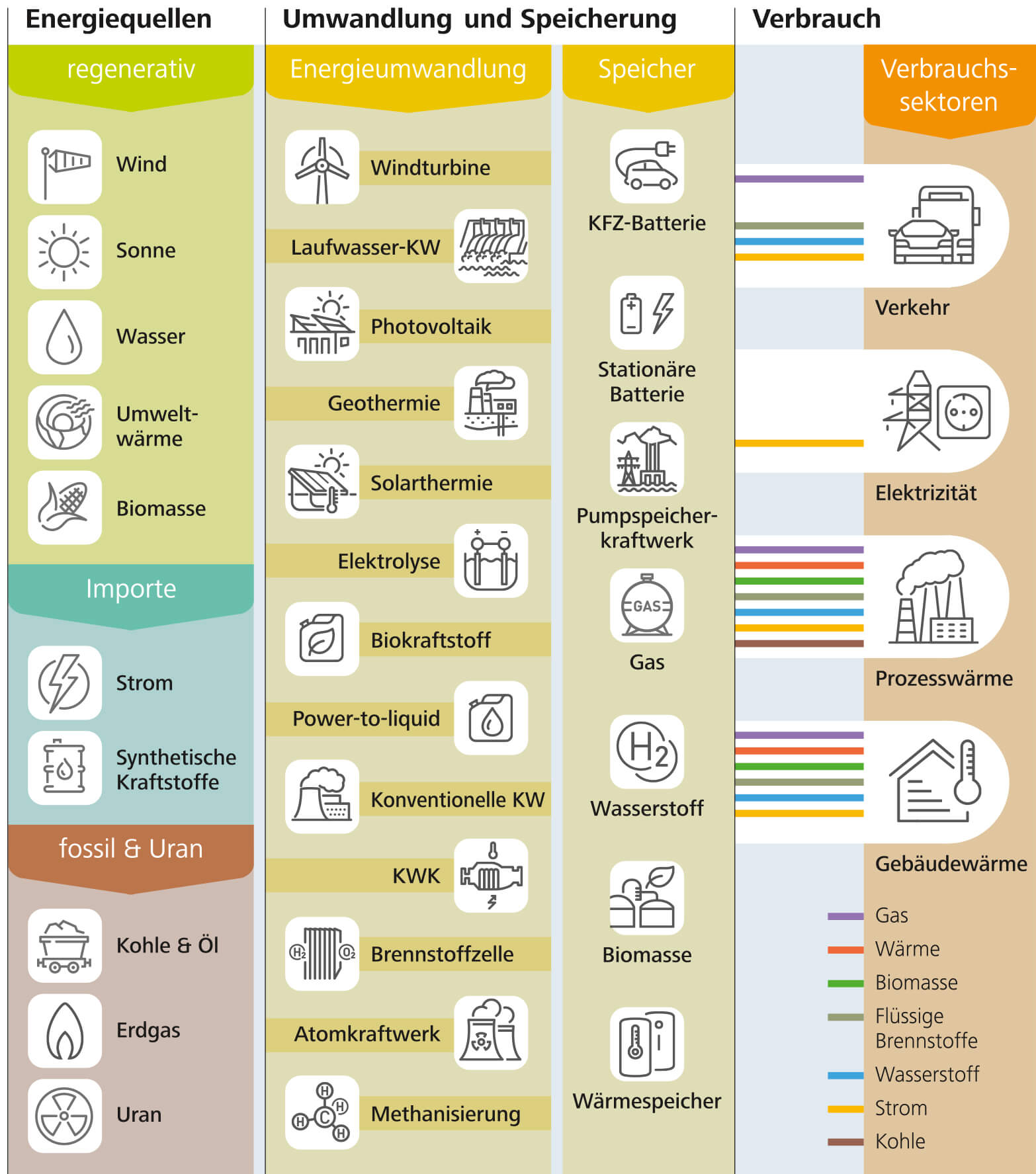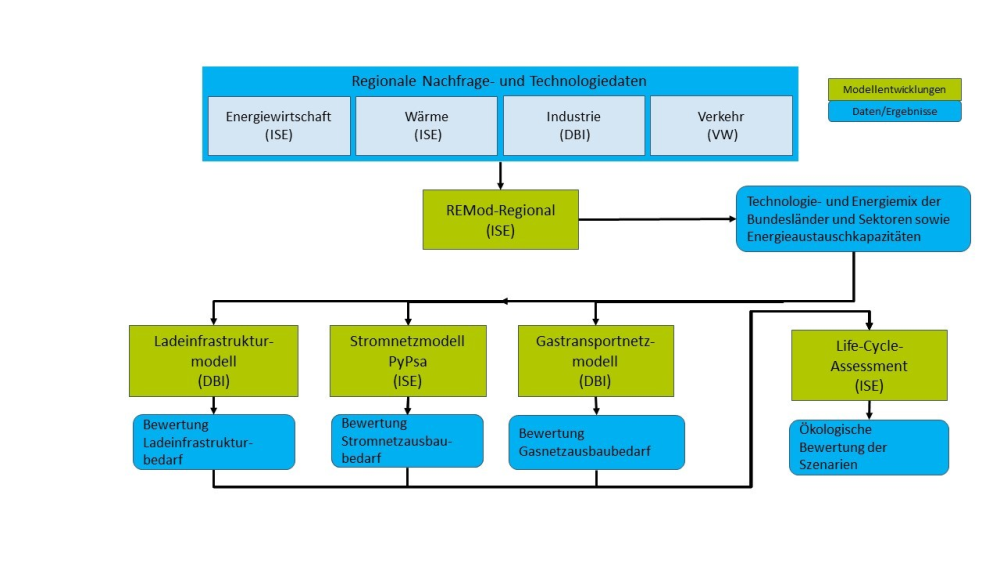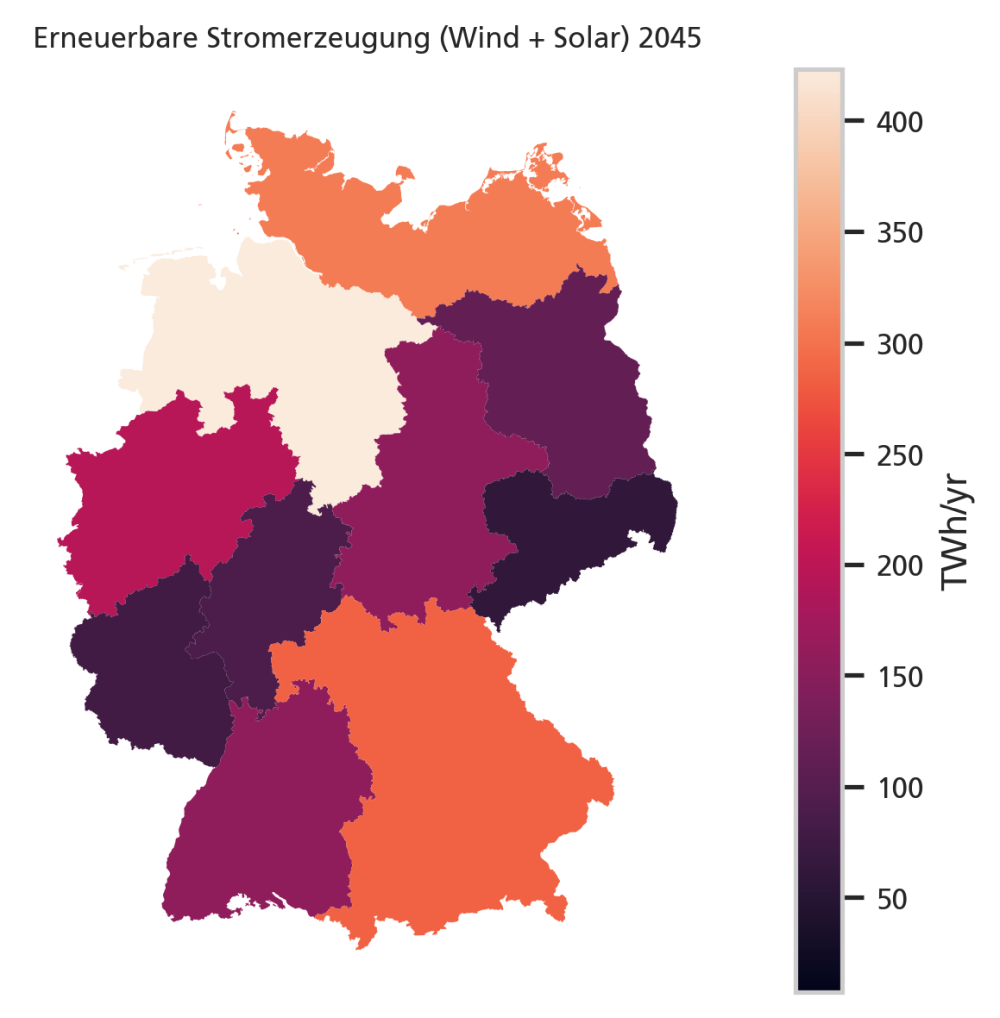| Duration: | 09/2019 - 12/2022 |
| Contracting Authority/ Sponsors: | Federal Ministry of Economic Affairs and Climate Action; Application-oriented non-nuclear R&D in the 7th Energy Research Program of the German Federal Government |
| Project Partners: | Volkswagen AG, DBI Gas- und Umwelttechnik GmbH |
| Project Focus: |
TransDE – Transformation of the German Infrastructure by 2050 in Harmony with the Energy Transformation of all Consumption Sectors



Infrastructures and regional aspects are becoming increasingly important in the context of the highly decentralized, fluctuating and spatially asymmetric energy transition. On the one hand, a strong and fast expansion of the power grids for the spatial balancing between renewable supply potentials and load sinks encounters many different obstacles. On the other hand, it will not be able to solve the systemic challenges of the energy transition on its own, even if these obstacles are overcome. This will require, among other things, new storage solutions and coupling of sectors including gas, hydrogen, and heat infrastructure for balancing over time and decarbonizing industry, heat, and transport.
Regional differences in the generation and consumption of energy are the basis for the analysis of infrastructures. In order to be able to calculate these with high temporal resolution in a sector-coupled energy system, the REMod energy system model was extended by a variable number of regions as part of the research project. In addition, the model was supplemented by an optimization of pipeline capacities for electricity and hydrogen in order to analyze interactions in the entire energy system through an integrated view. The model was applied to Germany for 10 nodes.
In addition to the further development of REMod, a model for the mapping of gas networks and charging infrastructures was developed by the DBI. In addition, a coupling with an LCA database was developed, whereby material inputs or emissions can be evaluated for the entire life cycle of all technologies. For a more detailed assessment of infrastructures, a coupling of the REMod model with the gas grid model of the DBI as well as with the electricity grid model PyPsa was implemented.
The results of the project show that a regional breakdown of the German energy system is necessary to evaluate infrastructures. In addition, transformation paths of all sectors of individual German states could be calculated for the first time. It becomes apparent, for example, that in addition to the large wind energy potentials in the north of Germany, wind potentials must also be used in order to achieve the climate goals, despite the strong use of photovoltaics in the south of Germany. It also becomes clear that, compared to a strong electrification, an increased use of synthetic energy sources requires significantly larger amounts of wind and PV in Germany and, in addition, more imports.
A coordinated expansion of electricity and hydrogen infrastructures is important to cope with the uneven distribution of supply and demand. In this context, hydrogen pipelines play a crucial role in order to efficiently utilize the large potential of renewable energies in the north. In addition, natural gas grids need to be adapted to allow the transport of hydrogen. Legal and technical standardization is important for the charging infrastructure of electric vehicles. Strategically placed fast-charging hubs and a demand-driven expansion of electricity distribution grids are necessary to meet the increasing energy demand.
Life cycle analysis shows that renewable technologies consume more energy and materials in production than fossil-based ones, but do not produce CO2 emissions during their use. In the overall picture, renewable technologies have a lower carbon footprint, underscoring their importance for CO2 reduction. A holistic assessment of the sustainability of renewable technologies is therefore crucial to recognize their potential for reducing emissions.